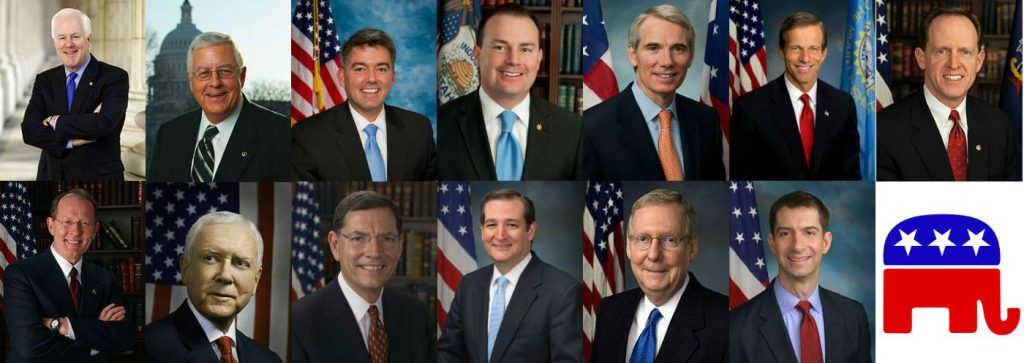
Source: Quartz.
Continue reading
“Troubled Wisconsin Man Goes on 50 State Killing Spree”
Entire post here (by Kendra Lubalin):
On Thursday afternoon, in Washington D.C., Paul Ryan, 45, entered his place of work in a murderous frenzy, killing thousands and injuring millions more, before he was finally stopped by the Senate.
We Don’t Need No Stinkin’ CBO Score
The House leadership, that is. According to The Hill:
The House will vote without waiting for a new Congressional Budget Office (CBO) analysis of Upton’s changes or the amendment from Rep. Tom MacArthur (R-N.J.) that won over the House Freedom Caucus. That analysis will eventually provide insight into the bill’s effects on coverage and its cost.
What’s the difference between what went down in flames earlier, and what is coming now? The text is not accessible to me yet (I searched here), but my understanding is it allows to waivers so states can drop the pre-existing conditions… and adds $8 billion over ten years to fund high risk pools.
Here’s some illustration of the sheer insufficiency of $8 billion. From CBPP:
The details behind this additional $8 billion are unclear; some accounts suggest it would go to fund state high-risk pools, while others suggest it would go for other purposes. But either way, the additional funding wouldn’t come remotely close to addressing the severe problems that the bill creates for people with pre-existing conditions. Notably, the $8 billion would restore less than 1 percent of the nearly $1 trillion the House bill cuts from programs that help people afford coverage.
This seems in some ways even worse for coverage than the first plan, which CBO assessed thusly:
CBO and JCT estimate that enacting [H.R. 3762, the Restoring Americans’ Healthcare Freedom Reconciliation Act of 2015, which would repeal portions of the Affordable Care Act (ACA) eliminating, in two steps, the law’s mandate penalties and subsidies but leaving the ACA’s insurance market reforms in place] would affect insurance coverage and premiums primarily in these ways:
- The number of people who are uninsured would increase by 18 million in the first new plan year following enactment of the bill. Later, after the elimination of the ACA’s expansion of Medicaid eligibility and of subsidies for insurance purchased through the ACA marketplaces, that number would increase to 27 million, and then to 32 million in 2026.
- Premiums in the nongroup market (for individual policies purchased through the marketplaces or directly from insurers) would increase by 20 percent to 25 percent—relative to projections under current law—in the first new plan year following enactment. The increase would reach about 50 percent in the year following the elimination of the Medicaid expansion and the marketplace subsidies, and premiums would about double by 2026.
Well, I can’t be sure it’ll be worse. For certain, the representatives voting tomorrow won’t know for sure because the House leadership is heck-bent on a vote without knowing. For them, it is clear, more knowledge is not helpful.
So much for the party of fiscal responsibility. Or expertise, for that matter.
Update, 6:10PM Pacific:
Vox assesses.
CRFB says the deficit will be increased by the bill.
Business Cycle Indicators as of May 2, 2017
Reader Steve Kopits writes “I am thinking the business cycle rolls over right here.” Here are five key indicators that the NBER Business Cycle Dating Committee have consulted in the past, as of today.
What They Say versus What They Do
Paul Krugman notes the disjuncture between what confidence is being expressed in the Trump economy as measured by surveys, and what the actual data indicate. Here are some additional observations on the disjuncture, based on yesterday’s consumption release.
President Trump’s GDP Forecast
From CNBC:
I really believe it," Trump said in an interview with Fox News. "We're saying 3 (percent) but I say 4 over the next few years. And I say there's no reason we shouldn't be able to get at some point into the future to 5 and above.
Economy off to a slow start for 2017
The Bureau of Economic Analysis announced today that U.S. real GDP grew at a 0.7% annual rate in the first quarter, weak even by the post-recession average annual growth rate of 2.1% and far below the U.S. historical average of 3.1%.
Continue reading
Monthly GDP Estimates and a Nowcast
Not spectacular.
“I am the king of debt. I do love debt. I love debt.”
That’s a quote from candidate Donald J. Trump in May 2016. And today, he re-affirmed his predelictions, in his tax “sketch”.
Econometrically Assessing the President’s Tax Plan
Well, we don’t know for certain what he’s going to announce (and maybe even he doesn’t know what he will) — but according to Bloomberg…
President Donald Trump plans to propose a 10 percent tax on more than $2.6 trillion in earnings that U.S. companies have stockpiled offshore, said a White House official familiar with the president’s tax plans.
Proceeds from the so-called “repatriation tax” would represent a one-time source of sorely needed revenue, which could offset some of the deep tax cuts Trump has proposed for businesses — or could be devoted toward popular, bipartisan initiatives, like infrastructure spending.